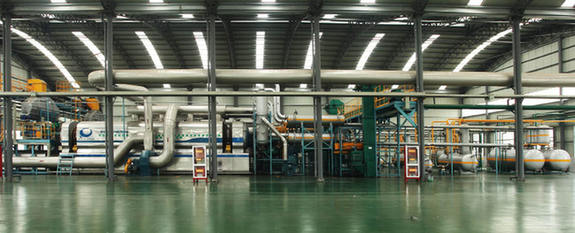Impetus for Action
By Kerry Brown
One of the greatest challenges for anyone trying to make sense of Asia as a region is the lack of clarity it still has. In The Transformation of the World, his magisterial global history of the 19th century issued last year, German historian Jürgen Osterhammel talked of the lack of "conceptual stability" that many Europeans in particular have about the region. "In any space," he writes, "a central question concerns the factors that underlie its unity and make it possible to speak of an integrated context. In this optic of global history, regions are spaces of interaction constituted by dense networks of transport and migration, trade and communications."
For the concept of Asia in its entirety, there were—and are—a number of issues confusing and complicating this sense of spatial interaction and inter-linkage. Uppermost of these is whether in the Asia-Pacific region there is a shared sense of common destiny and of ideas that hold people together across their separate cultures and languages.
Shared goals
The annual meeting of the Asia-Pacific Economic Cooperation (APEC) is one of the few forums where the diverse countries and cultures of this vast region sit down together and discuss issues of common interest. Established in 1989 largely through the promotion of then Australian Prime Minister Bob Hawke and headquartered currently in Singapore, it has a 21-strong membership which embraces the world's largest economies and includes the top three—the United States, China and Japan. But uniquely, it also has Russia, a country that stretches into Europe, and Papua New Guinea, one of the least developed economies in the region.
Among all this diversity, where is the common link? Of course, as historian Osterhammel argued, APEC members all share one thing—a common space, or geographical region. They are located in the Pacific region, and therefore the concept of a region in which they are able to depend on rules, and a predictable environment within which to undertake trade and other forms of engagement, is very important. That, more than anything else, brings them together and is recognized in the title of the grouping.
In that context, at the moment many of the Asia-Pacific countries are facing new challenges and are united by a mission to try to unlock more areas of sustainable growth either within themselves or regionally. By far the most dynamic economy here is that of China, and it is likely therefore that uppermost on the minds of most of the other attendees will be how to use APEC as a means of getting more access or better-quality access to opportunities in the People's Republic. This makes it particularly appropriate then that the 2014 Economic Leaders' Meeting, the organization's 22nd, is held in Beijing.
With a family of membership that consists of disparate sizes of economies and levels of development, one of the ongoing challenges that APEC, along with other forums, tries to address is what kind of common conception of engagement might exist among its different partners. Do they really feel like they belong to a community where there are common underlying ideas and aspirations? Or are they participating to better their own economies, and placing priority on that? The issue here is that the link between these two is becoming increasingly blurred: Local outcomes depend on regional and international ones, and if there is deterioration in the atmosphere of the latter, the former will also suffer. Will any APEC attendees therefore want to take the lead and assert some bold baseline ideas for what the Asia-Pacific region actually represents, what its identity is and how this relates to the wider world around it?
One way to answer this might be to look at common challenges across all the APEC members. Most, if not all, are struggling with resource and sustainability issues. They are also trying to tackle inequality. There is a new leadership in Indonesia which is working to combat corruption and lessen rifts between the poor and the wealthy there. The Japanese Government has also been trying to kick-start its economy after two decades of sluggish growth by implementing a more reformist program. Thailand has undergone serious political instability in the last year, losing its sitting government due to clashes between rural and city constituencies and anger about unequal growth.
In the United States, Congress has never suffered such poor approval ratings, and new data show that wealth has clustered around increasingly small groups of people, igniting resentment and political dissatisfaction. Australia, long labeled a "lucky" country, has just hit austerity under the new Tony Abbott administration's tough budget designed to cut government debt, and is experiencing a savage domestic backlash. There are few APEC members that are not currently facing serious internal pressures.
China is certainly not immune to these issues, despite its maintenance of relatively high growth. Anxiety about sustainability issues has been a common feature of Chinese leaders' statements. Polluted air in cities over the last couple of years is only one of the more vivid reminders that the costs of more than 30 years of rapid growth on the Chinese physical environment have been steep. But there are similar worries about inequality, and about where to continue finding sources of growth.
The hunt for growth in an era when it has to be sustainable and more equitable therefore seems to be a coherent common theme across the APEC members. If this is the case, how best can members frame a common approach to the solution and modes of cooperation?

